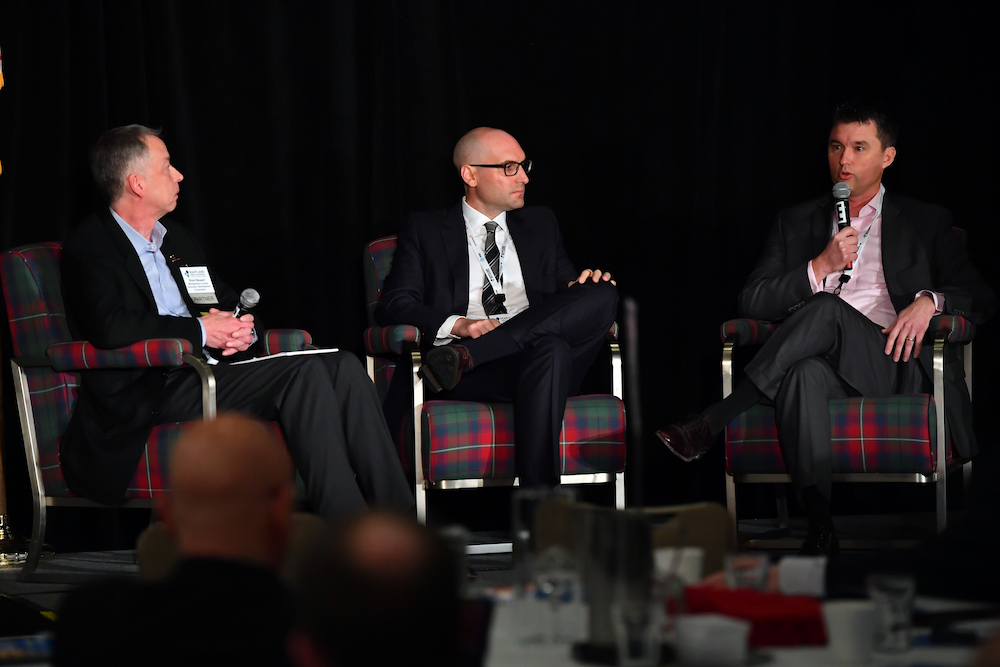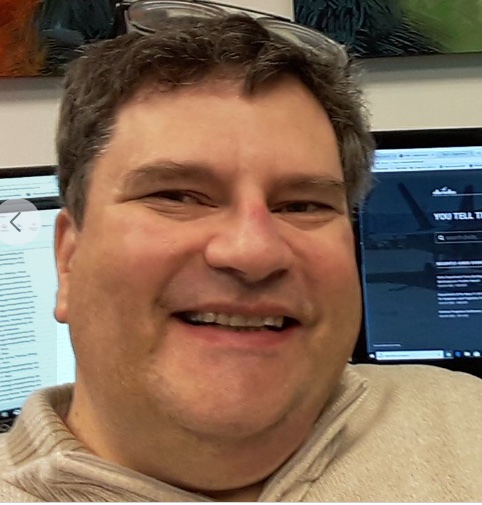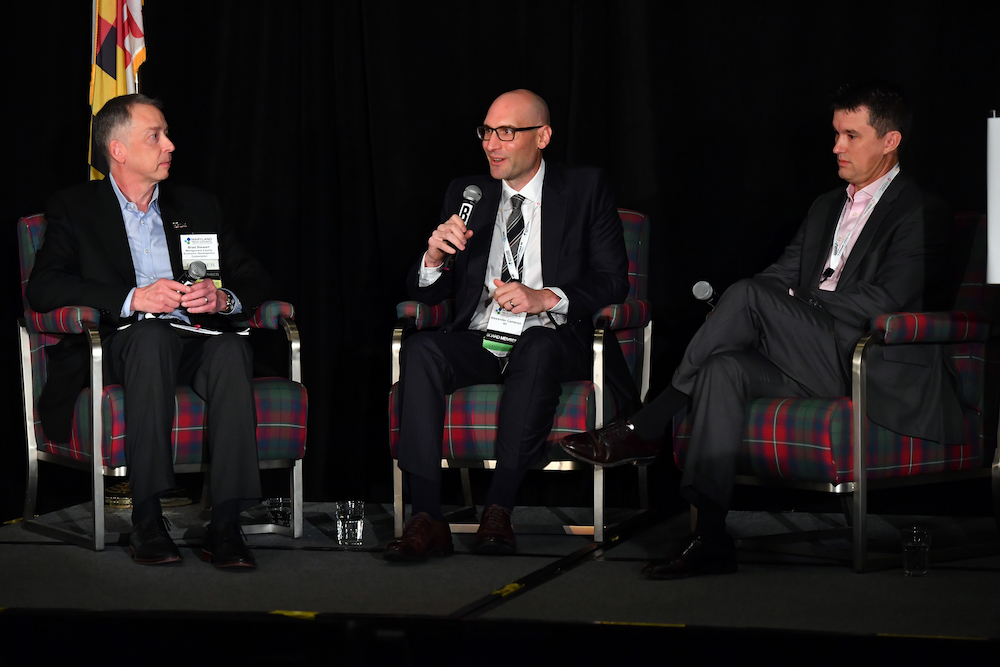On Thursday, Maryland Tech Council’s 2023 Annapolis Day Advocacy Summit convened technologists and organizations from around the state to listen to panel discussions on the life sciences workforce and equitable internet access, among other issues.
Closing Maryland’s life sciences talent gap will require training and coordination.
“This has been a growing passion project for me, to see this industry grow and succeed in the state,” said Brad Stewart, the life sciences panel moderator, who is also SVP of business development at the Montgomery County Economic Development Corporation.
Stewart, along with BD Integrated Diagnostic Solutions Senior Director Alexander Cameron, and Immunomic Therapeutics VP of Cell Therapy Operations Brian Stamper, recognized that although the life science industry is growing in Maryland, corporations are running into a severe headwind when it comes to finding talent.
“For me, what I see in the life science industry, workforce development is topic number one,” Cameron said. “There are so many opportunities.”
Opportunities in the field exist in Baltimore — Stewart reported 3,000 life science job vacancies in Maryland — but many positions have gone unfilled.
“There just aren’t skilled people to take these jobs,” he said. “We just need people who have these skills. They would welcome anyone in the door.”
Those life sciences jobs pay well, too. Stewart noted that there are 54,000 people working in the life sciences in Maryland. Their average salary is $129,000, he said.

(Photo courtesy of Maryland Tech Council)
Stamper works at the Kite Pharma facility in Frederick, Maryland, where the company has created an immunotherapy regime for those suffering from glioblastoma, a brain cancer. He said the 500-employee facility doesn’t only need higher-end life-science workers. Fields there include warehouse, manufacturing, quality control, facilities technicians, and logistics and finance employees.
His company works with BioHub Maryland and Platoon 22 to find talent. (The two orgs just launched a workforce development program to upskill military vets into life science jobs this week.)
“There’s a huge variety of roles,” he said.”You have to be a little creative.”
Cameron’s company has seven main facilities in the state. His company works with institutions like UMD and its CURE Scholars Program to encourage young people from diverse backgrounds to pursue life science careers.
The panelists agreed cooperation is the key to Maryland’s life-science industry becoming even more competitive. Stewart said the state’s industry may be more than $1 billion less in gross domestic product, because it’s not maxing out its capacity.
But those gathered seemed optimistic. Working together and in conjunction with education and training organizations was realizing real dividends, they said. They want to see more.
“You have to have the full ecosystem,” Cameron said. “We can’t do this in a silo.”
The Maryland #lifesciences industry affords people many opportunities to learn and grow. The diversity of projects and experiences available not only give people range over their careers, but also the opportunity to save lives at a very personal level. #2023AnnapolisDay pic.twitter.com/tLaBJtYFbc
— MD Tech Council (@MDTechCouncil) January 19, 2023
Closing the digital divide will require community engagement.
The panel following the life sciences discussion addressed equity in internet access, as moderated by Laura Toraldo, executive director of the MD5G Partnership. She was joined by panelists Kenya Asli, the interim director of broadband and digital equity for the Baltimore City Office of Information and Technology; Ashley Green, the public affairs manager at Crown Castle; Tiffany Harvey, VP of government and regulatory affairs at Comcast; Jinhee Kim, associate dean at University of Maryland Extension; and Katie McEvoy, a regional director at AT&T.
Remember: As of 2018, 40% of Baltimore residents were without wireline internet connectivity.
“When we see the digital divide, I think it’s important to see where Baltimore is,” Toraldo said. “It disproportionately affects underprivileged Baltimore residents.”
There was some debate on whether those Marylanders without access would be better served by better 5G data versus a broadband connection.
Asli said families with multiple members struggle to maintain a reliable internet connection in her city, when they don’t have a broadband connection.
“People are in their homes crossing their fingers hoping they don’t run out of data,” she said. “The answer is wired connectivity in the home.”
“We need to do a better job of telling people you can be online, and you should be online,” Harvey agreed. (Technical.ly heard some of this debate when it convened digital access pros across several mid-Atlantic markets in November: Broadband adoption, and acceptance, remains a challenge.)
Like those from the first panel, those gathered agreed that working together was the best way forward to meet the digital access needs of the 21st century.
“Engaging the community is very important,”Kim said. “And partnership — I think that’s very important to success.”
Change your approach to community engagement. Take time to educate the community on your tech and how it is being used so that your community is informed and engaged. #2023AnnapolisDay pic.twitter.com/59PvqSz5jH
— MD Tech Council (@MDTechCouncil) January 19, 2023
Before you go...
Please consider supporting Technical.ly to keep our independent journalism strong. Unlike most business-focused media outlets, we don’t have a paywall. Instead, we count on your personal and organizational support.
Join our growing Slack community
Join 5,000 tech professionals and entrepreneurs in our community Slack today!

Millions of dollars pour into semiconductor manufacturing in Southwestern PA

Top tech stories of 2024: How AI, cyber and community made DC innovation sing


